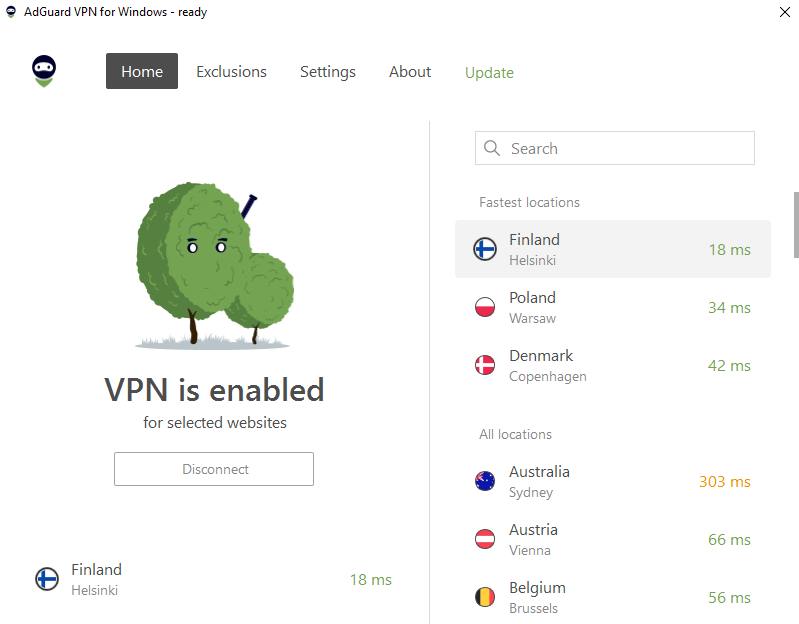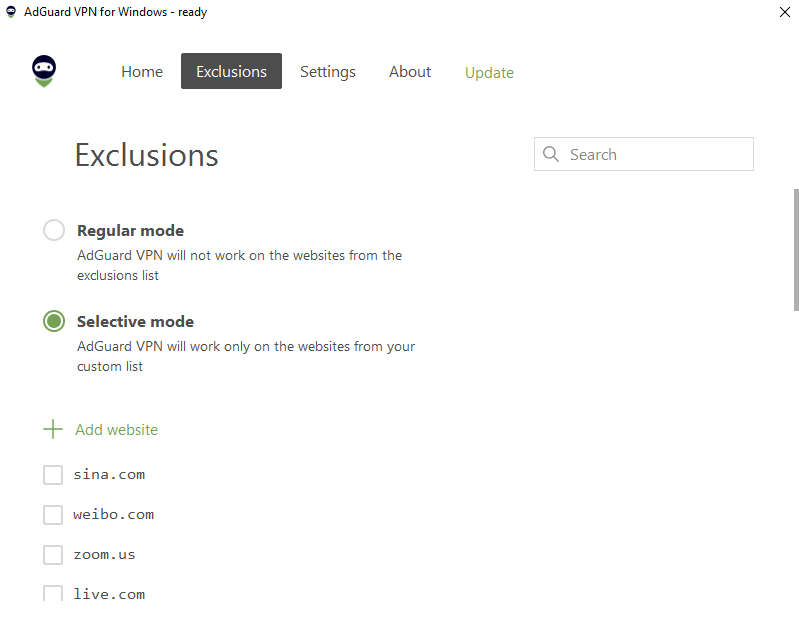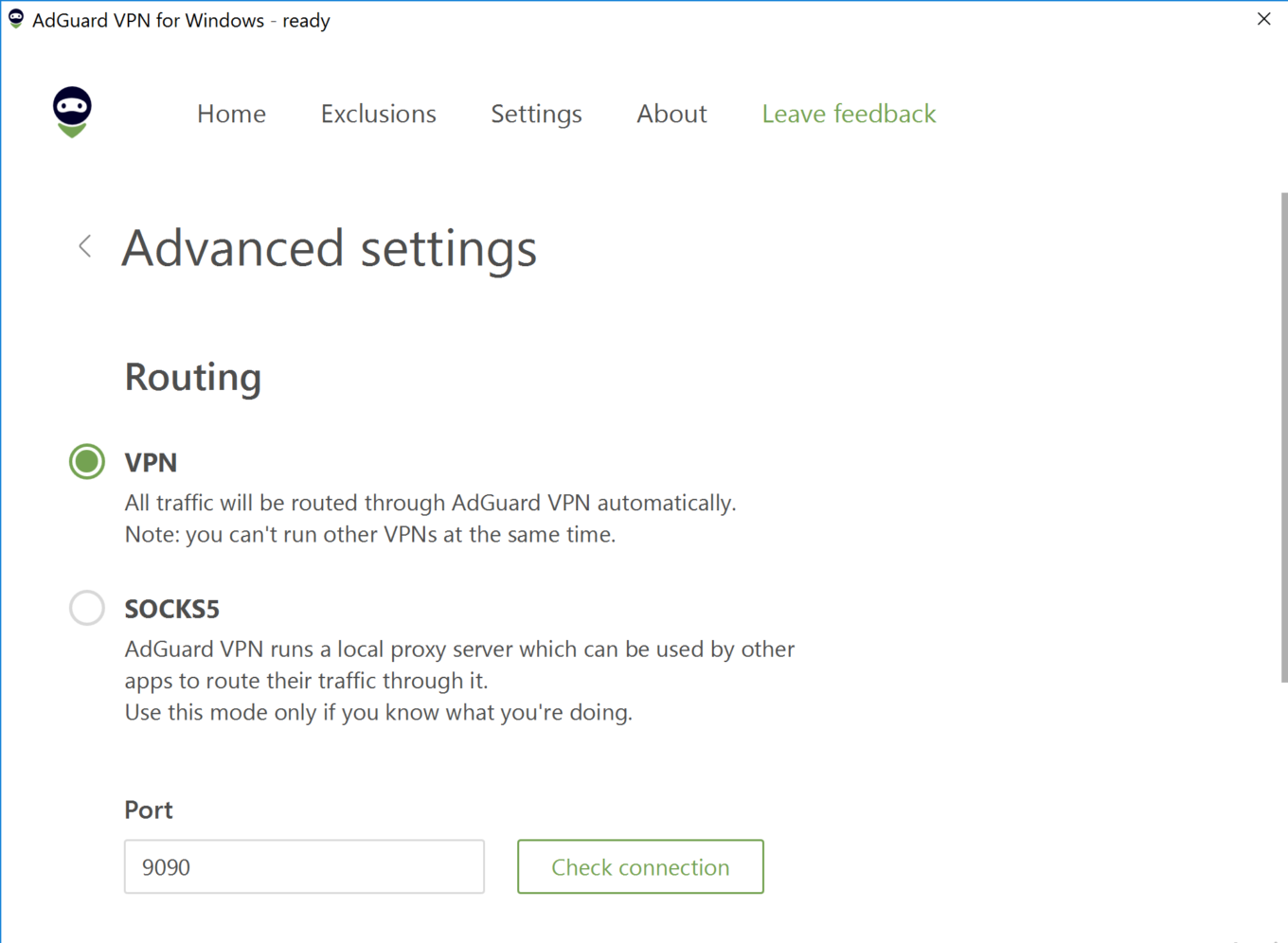AdGuard VPN for Windows (alpha): straight out of the oven
Hello 2021! Let's start the new year with some good news.
Windows users, rejoice beyond the common joy! Justice has been done, and we have released the first alpha version of AdGuard VPN for Windows. We are proud to present to you the fruit of several teams' labors.
Disclaimer: we are at the stage of alpha testing – testing the product which is still raw. But if you're interested to take part in it – here is the opportunity!
Pings

The first interesting feature would be pings. A quick reminder: a ping is a variable that shows how fast the server responds to the request. The lower it is, the faster is your VPN connection. Pick and choose the best location! Or, there is an option to connect to the quickest one.
As far as we know, not many VPN services show pings. And we do! This is the first brick to build a highly competitive product.
Two tunnel modes

Don't let the tunnel part scare you! Basically, there are two options: Regular and Selective mode. In the first one, AdGuard VPN tunnels all traffic (= works on all websites) except the websites a user has added to an exclusion list. In the second one, it's vice versa — AdGuard VPN tunnels only websites from the exclusion list. Put simply, you can choose where to use VPN and where not and switch between two modes just snapping your fingers. The second brick in the wall.
Two VPN operation modes*
It gets a little more complicated here. This section is marked with an asterisk for a reason — we're talking about technical nuances of VPN here. If this topic is new for you, let's figure it out together :)

Okay, so, there are two VPN operation modes:
- VPN. Works by a root network driver on the system level. It's very powerful and can be used if you want to filter all incoming traffic.
- SOCKS5. In a way, it's higher level than the first mode — not at the system level but at the client level.
So, how is it technically arranged?
In the VPN mode, our system driver intercepts all the outcoming traffic and tunnels it through the VPN (of course taking tunnel mode and the custom exclusion list into the account).
In the SOCKS5 mode, traffic is routed through a local port (a port on a local host). We create a proxy server on the specified local port, and listen to this port in order to further tunnel incoming traffic through the VPN. A user can reroute it simply by changing browser settings (or using a browser extension providing such functionality).
The second mode can be especially handy for many users. For example, you can choose whether the connections for the same website go through the VPN or not. Only the traffic passed to the selected local port will be tunnelled trough the VPN. It's really convenient, enjoy it! A little fine-tuning making the third brick.
Blueprint for the future
To date, AdGuard VPN for Windows is rather crude but we intend to – with your help – make it stable as quickly as possible. As always with the release of a new product, we gather user feedback. Your reviews, bug reports and feature suggestions are very welcome!




















































